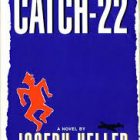A Novel Phobia: Treatment Plan
While I may have given Graphobibliophobia a name, it would seem that it is a widespread affliction. Identifying it was the first step. Now, fellow Graphobibliophobes, what do we do about it?
Traditional treatments for phobias include things like modeling, counter-conditioning, and exposure treatments. All of these involve confronting the fear in some controlled way. The bottom line? To overcome graphobibliophobia, you have to write a novel.
Before proceeding with treatment, there is a question that we all need to ask ourselves: is writing a novel something I really want to do, or is it something I just feel like I should do?
If you don’t really want to write a novel, don’t. There are certainly noteworthy fiction writers who have never produced traditional, full-length novels, such as Jorge Luis Borges, Raymond Carver, George Saunders, Amy Hempel, and Lydia Davis. It’s not like there is a check box under the ‘writer’ description for “Produced a novel.” As with having kids or wearing high heels, a novel should be written because the writer wants to write it, not because s/he feels like it is an obligation or a path to legitimacy.
That being said, not wanting to write a novel and being too afraid to write a novel are different animals. Avoiding a novel at the hands of fear is a world apart from being a short story writer by choice. Fear should never dictate what a writer choses to create. So if the novel is what you want, here are three approaches to circumventing your fear.
Baby Steps

Baby Steps through Character Development, Baby Steps through Motifs . . .
Let’s call this the What About Bob? Approach: Baby Steps through the writing process. Instead of plunging into a novel like a Labrador chasing a tennis ball into a lake, dip your toe into full-length works in a safe, non-threatening way.
If you have a decent library of short stories, compile them into a collection. Consider the work as an entire reading experience. What is the first story you want readers to experience that will set the tone for the collection? What should fall in the middle? What note do you want to end on? Review the collection for things like pacing, theme, and variety. This Baby Step is essentially a workout in copy and paste, allowing you to exercise your editing eye while considering a holistic, long work. Just seeing something with a high word and page count can inspire confidence.
 An alternative, slightly more advanced Baby Step is writing a linked short story collection. Select a place or character or event to construct a dozen or so stories around. The stories can then be developed individually and then brought together. I love reading these types of works, like Elizabeth Strout’s Olive Kitteridge or Sherwood Anderson’s Winesburg, Ohio. As an added bonus, you can send out the individual stories for publication while you are working on the collection. Poets can even use this to create a novel-type work, akin to Spoon River Anthology by Edgar Lee Masters.
An alternative, slightly more advanced Baby Step is writing a linked short story collection. Select a place or character or event to construct a dozen or so stories around. The stories can then be developed individually and then brought together. I love reading these types of works, like Elizabeth Strout’s Olive Kitteridge or Sherwood Anderson’s Winesburg, Ohio. As an added bonus, you can send out the individual stories for publication while you are working on the collection. Poets can even use this to create a novel-type work, akin to Spoon River Anthology by Edgar Lee Masters.
Possibly a collection isn’t your bag, though, while an actual novel is too much. So how about baby steps through a novella (roughly 17,000 to 40,000 words)? Or even a novelette (7,000 to 17,000 words)? These approaches are more manageable because they are essentially just slightly longer short stories. Is there a short story sitting in your files that is just a bit too long? Or that you feel isn’t quite developed enough? Start with that—push it into new word count territory just to see where it takes you. There might even be an idea floating around in your head that you think is too long for a short story, but not really enough for a novel. Many publishers, Ploughshares included, are utilizing the online format to produce fantastic novellas.
Jedi Mind Trick
Maybe you are beyond Baby Steps, or maybe you want to jump straight to a novel, not a collection or novella. Yet, you can’t seem to get a handle on the project. Time to trick yourself. It’s okay, you’ll forgive yourself later.
This is not a novel you are writing . . .
Some of my favorite novels are actually four or more mini-works that have been artfully woven together by the author: Amy Tan’s The Joy Luck Club tells eight different stories, while Margaret Atwood’s use of a nesting doll approach in The Blind Assassin produces not one, but two narratives within the narrative. So take the pressure off the novel label by writing several shorter threads to be braided together later. Unlike a linked collection, this approach does require a less fractured approach because the plots of all the pieces should in some way overlap.
Begin by outlining an overall plot. It doesn’t have to be super specific yet; you just need an idea of where you are going. How you get there is up to you and the limits of your creativity. Shifting point of view, epistolary, non-linear plot—there are countless way to combine these types of narration.
The key—the mind trick—is to just focus on one strand at a time. You might even borrow advice from Joss Whedon and write the stuff you are most excited about first. Treat it as you would a short story, revising and tweaking until it feels polished. Move on to the next strand, and so forth, until you feel that you have told your story once all the elements are combined. Then comes the fun part of braiding it all together, trying different combinations of organization. In the end, you have a long work that you tricked yourself into writing through a different approach.
Do It
 If you’re past Baby Steps, and the Jedi Mind Trick just isn’t the cure for what ails you, don’t worry—all is not lost. Sometimes you just have to do it. In the 1962 musical Bells are Ringing, Dean Martin plays a songwriter who, having lost his writing-partner, finds himself unable to create anything. His booze fueled anthem, “You’ve Got to Do It,” is a writer’s pep talk attempting to push through in the simplest way: just do it. Revealed by the song are all his insecurities—faking it, losing respect, running out of time, and doing it alone. Valid laments, all.
If you’re past Baby Steps, and the Jedi Mind Trick just isn’t the cure for what ails you, don’t worry—all is not lost. Sometimes you just have to do it. In the 1962 musical Bells are Ringing, Dean Martin plays a songwriter who, having lost his writing-partner, finds himself unable to create anything. His booze fueled anthem, “You’ve Got to Do It,” is a writer’s pep talk attempting to push through in the simplest way: just do it. Revealed by the song are all his insecurities—faking it, losing respect, running out of time, and doing it alone. Valid laments, all.
The good news is, we don’t have to do it alone. Yes, writing is a solitary process, but that doesn’t mean that the process must be a lonely venture. Writing groups, or at least a good writing group, can be a great way to keep motivated. If schedule or isolation demand it, online groups are available for most types of writing. Even better is a face to face group which meets on a regular basis. Coming up goose eggs for a local writing group? Make your own. You’ll be surprised how many people are quietly working on their own novels and need a little support.
I’ve accepted that NaNoWriMo is never going to work for me due to its unfortunate timing in my academic semester: trying to teach research paper writing and Paradise Lost while writing 1,500 words a day is setting myself up for failure. For others this might be the perfect solution; the ripping off of the proverbial Band Aid. The NaNoWriMo organizers not only send out encouraging emails, they connect writers with local writers completing the same challenge. You might not finish the challenge, but you will be connected with other writers with your same goal and possibly similar fears. Then you can ‘do it,’ but not alone.
The baseball classic Bull Durham applies to many things in life, and writing is one of them: “You gotta play this game with fear and arrogance.” Arrogance would seem necessary to some extent to keep us all from crumbling into piles of balled up Kleenex after every rejection. Fear? Well, perhaps that fear is healthy—it shows that we have some understanding of the gravity and commitment the profession requires.
So maybe graphobibliophobia indicates an imbalance in the Bull Durham equation: too much fear, not enough arrogance. For me, the first step toward overcoming this phobia has been articulating it. Then I took the Baby Step of compiling some of my stories into a collection. Just seeing a 50,000 word count in a single document felt like an important accomplishment. Now I am superstitious (I know few writers who aren’t), and don’t like to talk too much about things I’m working on, but I’ll say that something has taken root—there are words on the page and a Jedi Mind Trick at work. Here’s to finding out where it goes.



